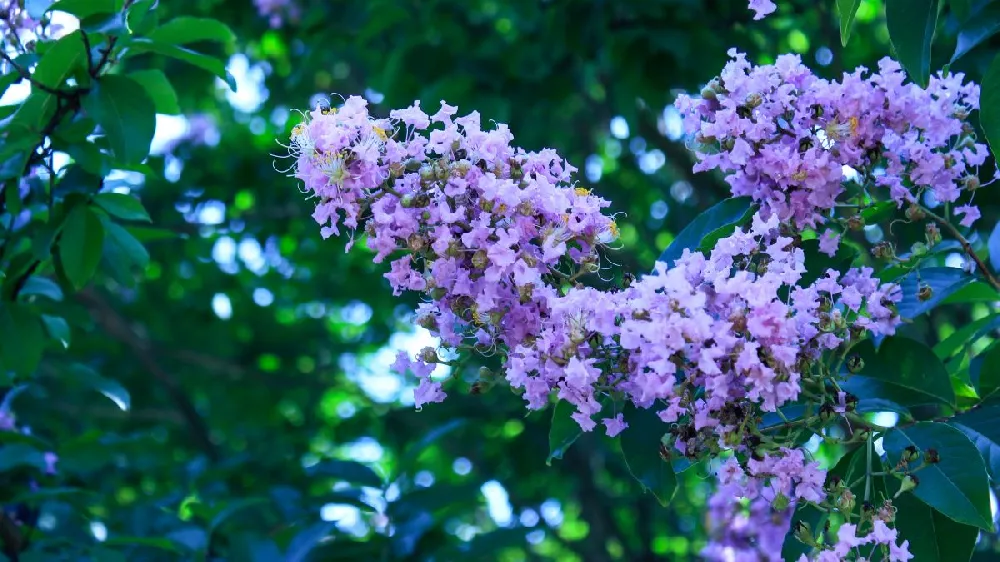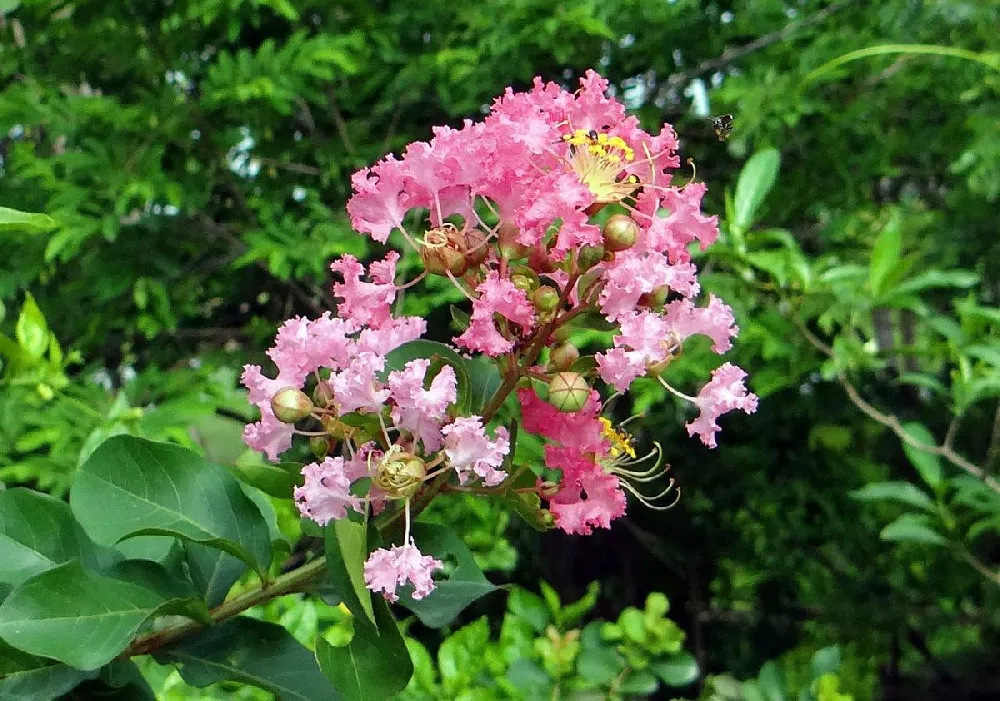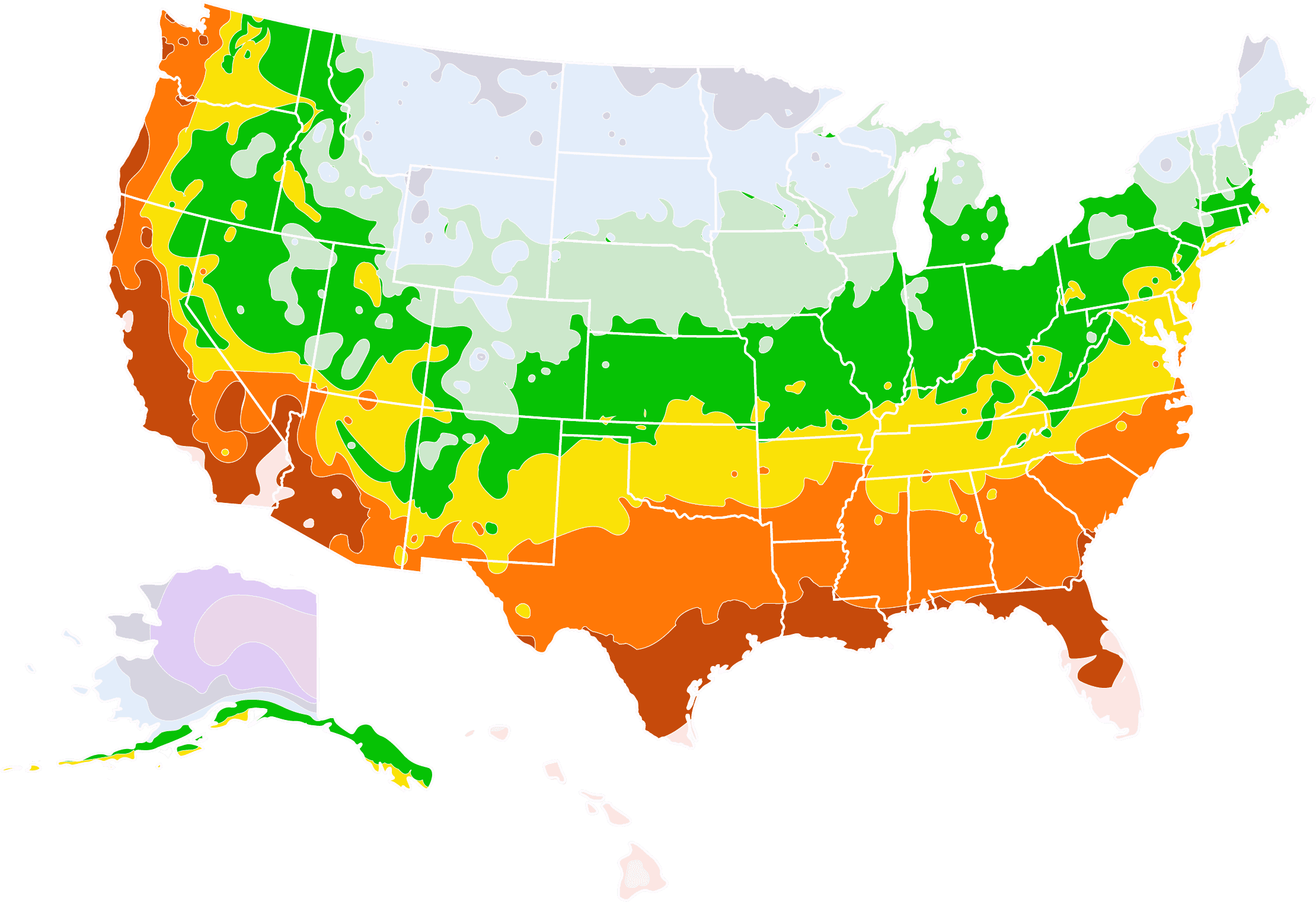- Home >
- Flowers >
- Trees and Plants with Pink Flowers >
- Hopi Crape Myrtle
Hopi Crape Myrtle for Sale - Buying & Growing Guide
If you are a lover of crape myrtles and their lovely blooms, you'll want to take a close look at Hopi Crape Myrtle, Lagerstroemia indica x fauriei 'Hopi'. This robust and sturdy tree features glorious bright pink blooms that can last as long as four months, from June through September. Even better, it grows as far north as USDA hardiness zone six, which means it can even be grown by gardeners in parts of New England and the Pacific Northwest. The Hopi Crape Myrtle is a petite shrub that fits nicely into smaller gardens but also works well in expansive landscapes, especially when planted in multiples. It can be grown either as a shrub or as a single-trunk tree and is resistant to most diseases and pests. Here are a few more reasons to love this hardy plant:
- Once established, it's drought-resistant.
- Brilliant fall foliage in shades of red, yellow and orange.
- Attractive to pollinators and songbirds.
Enter your zip code to find nearby stores that may carry this plant.
Plant Care
Sunlight

Hopi Crape Myrtle grows best in full sunlight, six or more hours of direct light a day.
Watering
Water regularly when young; once established, it needs supplemental watering only in very dry weather.
Fertilizing

Fertilize in spring with a product that is higher in nitrogen, such as a 20-10-10 formula.
Planting and Care
Planting instructions
Site your Hopi Crape Myrtle in soil that drains well and receives at least six hours of sunlight each day. Unpot the shrub and tease out any encircling roots, which can girdle the tree and slowly kill it. Dig a hole that’s as deep as the root ball and twice as wide. Place the shrub in the hole, spreading out the roots. Holding it upright and steady, fill in around the roots with topsoil, tamping down as you go to eliminate air pockets. Water thoroughly. Apply a two to three-inch layer of organic compost such as bark chips around the root zone but keep it from touching the trunk to avoid problems with rot.
Watering and nutrients
For your shrub’s first growing season, water at least once a week, giving it an inch of water at a time. If the weather is very hot or dry, increase watering. After the first year, when the shrub is established, you can cut down on watering. If you’re not sure if your shrub needs water, dig down about two inches and see if the soil there is dry. If so, give your shrub a drink. Fertilize in early spring with a product that is higher in nitrogen, such as a 20-10-10 formula.
Pollination
Crape myrtles are self-fertile, which means a single shrub will have both male and female reproductive organs. These shrubs are attractive to pollinators such as bees and wasps; when pollinated, the shrub produces small brown seed pods.
Pruning
Monitor your shrub for dead, damaged or diseased branches and trim them out whenever you see them. In spring, you may prune to shape your shrub by cutting back the longer and thinner branches. Cut out all but the four to five sturdy trunks, unless you want to grow your crape myrtle as a small tree, in which case leave only the strongest trunk.
Pests and diseases
The Hopi Crape Myrtle is resistant to most diseases and pests. Pests that may occasionally appear on your crape myrtle include crape myrtle aphids and Japanese beetles. A healthy shrub shouldn’t be bothered by insect pressure. Diseases that are common to crape myrtles include powdery mildew and Cercospora leaf spot, but you are unlikely to see any signs of these on your Hopi.
Achieving maximum results
One way to achieve maximum results with your Hopi Crape Myrtle is to use it as a container planting. This allows you to place this lovely cultivar on a patio or deck or flanking a front entryway. It’s not difficult to grow your crape myrtle in a container. Choose a pot that is about twice the size of the root ball with large drainage holes in the bottom. Use a good-quality potting mix, and plant as per our directions above. Note that container-grown plants tend to need more frequent watering than those growing in the soil, and be sure you place your crape myrtle where it will get as much sun as possible.
FAQs
How big does the Hopi Crape Myrtle get?
The Hopi Crape Myrtle is smaller than many members of its family, maxing out at a height of five to ten feet, with a mature width of four to ten feet. Its smaller size makes this a good choice for petite urban lots or smaller gardens.
Where can I grow Hopi Crape Myrtle?
Good news for northern gardeners: the Hopi Crape Myrtle is hardy in USDA hardiness zones six through nine. That means that gardeners as far north as upstate New York and coastal Massachusetts can grow it without having to worry about low temperatures. In fact, it is hardy down to zero degrees Fahrenheit, although it will appreciate being deeply mulched in colder climates.
How is the Hopi Crape Myrtle best used in my garden?
With four months of bloom time, it's best to place this attractive cultivar in a spot where it will be noticed. Consider planting a grouping of three or five in your front yard or another prominent spot, where it will be easily admired by passers-by. It would make an excellent centerpiece to a cottage or rustic garden and would provide a colorful backdrop near the rear of a bed of mixed perennials.
Compare Similar Products
You can't add more Product Name - Product size to the cart.
OK








